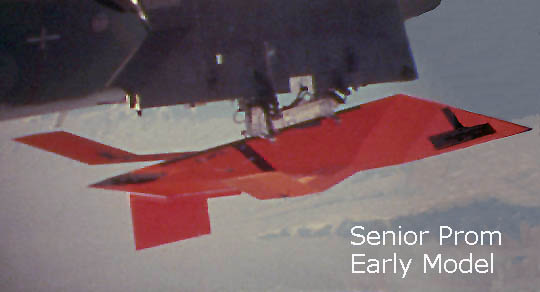 Photo: © James C. Goodall |
All photos copyright © James C. Goodall, with friendly permission. Photos may not be reproduced in any form without the written permission of the copyright holder.
SENIOR PROM was a U.S. Air Force program in the early 1980s to develop a highly stealthy cruise missile. The project is still classified, and until now only very limited and unconfirmed information was available. However, the late Ben R. Rich, former head of Lockheed's "Skunk Works", had provided aerospace researcher and author James C. Goodall in 1992 with material about the SENIOR PROM program. This material, which included motion picture films of test launches of SENIOR PROM flight test articles, was not to be published in any way for at least 10 years. Many thanks go to Mr. Goodall for sharing the images and information and allowing us to publish them here.
The SENIOR PROM program was begun in the late 1970s after Lockheed's HAVE BLUE manned testbed had validated the basic idea of using "faceting" (where the entire external surface consists of carefully aligned flat polygons) to generate aircraft shapes with an extremely low radar cross section (RCS). Beginning around 1978 or 1980, recoverable prototypes of the SENIOR PROM missile were launched from DC-130 carrier aircraft (the second launch was on reportedly 17 May 1980). A total of thirteen flight tests occurred, which were all successful. The vehicle was flown over the RCS range of Groom Lake without generating a detectable return on the SPS-13 range radar.
 Photo: © James C. Goodall |
The shape of the SENIOR PROM missile's fuselage was very similar to that of the HAVE BLUE. There was of course no need for a cockpit and canopy, and so the fuselage profile was a bit flatter. The sharply swept wings were of narrow and constant chord, and the initial configuration had outer sections with a very pronounced dihedral. It can be assumed that the wings could be folded for more compact carriage by the launch aircraft. Unlike on HAVE BLUE (and the later F-117A), the fuselage side and wing leading edge did not form a single straight line. In the initial version of the SENIOR PROM missile, a major difference from HAVE BLUE was the configuration of the tail surfaces, because SENIOR PROM had only a single rectangular ventral fin. However, later flight articles used a V-tail very similar to that of the F-117A, and also eliminated the outer wing sections. The single jet exhaust in the triangular tail was very flat, and the airframe shielded the exhaust from below (as on HAVE BLUE and F-117A). It can be assumed that the missile was powered by a single turbofan engine.
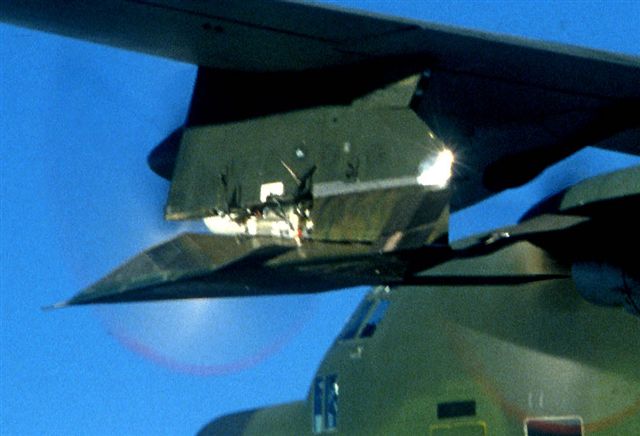 Photo: © James C. Goodall |
Despite the successful flight tests, no production contract was awarded for SENIOR PROM. One reported reason is that the missile was too bulky to be carried in the bomb bay of a B-1B. I don't have dimensional data on SENIOR PROM available to check this claim, but the relatively wide and flat shape of the SENIOR PROM design was indeed not optimal for internal carriage. Development of a stealthy cruise missile was subsequently continued by the AGM-129 ACM (Advanced Cruise Missile) and AGM-137 TSSAM (Tri-Service Standoff Attack Missile) programs.
The images below show several launches of the SENIOR PROM test vehicles. They were provided to aerospace researcher and author James C. Goodall in 1992 by the late Ben Rich, former head of Lockheed's "Skunk Works", under the condition that they will not be published for at least 10 years. Click on the photos to enlarge.
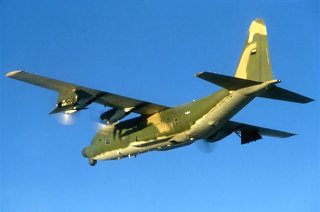 | 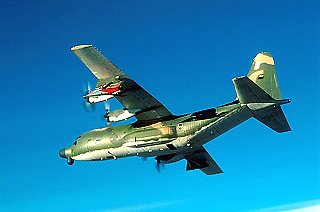 |
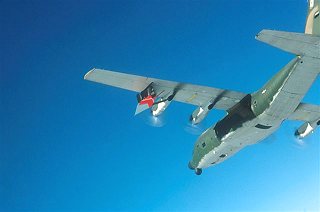 | 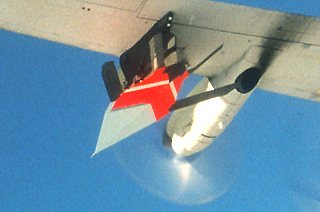 |
| Photos: © James C. Goodall | |
No public information is available on the SENIOR PROM's dimensions and performance characteristics.
[1] Information and images provided by James C. Goodall
[2] Curtiss Peebles: "Dark Eagles: A History of Top Secret U.S. Aircraft Programs", Presidio, 1999